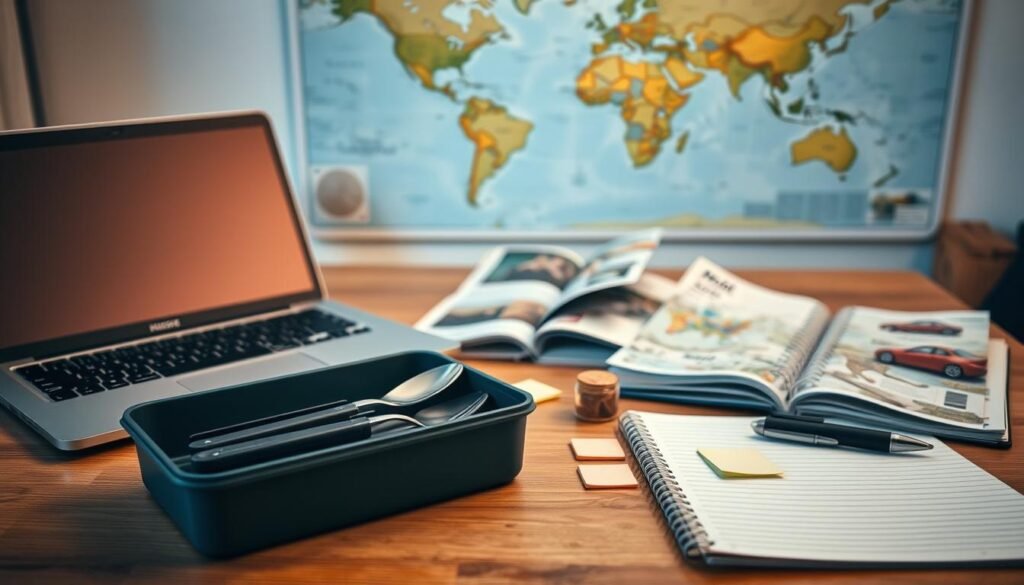Traveling is exciting, but it can be pricey, mainly for food. Eating out for every meal can quickly add up. Effective travel meal planning helps enjoy your trip without spending too much.
With a few simple strategies, you can significantly reduce your food expenses. This makes a big difference, whether you’re a seasoned traveler or planning your first trip. Learning to save on meals is crucial.
Key Takeaways
- Plan your meals in advance to avoid last-minute, costly decisions.
- Pack snacks to keep hunger at bay between meals.
- Explore local cuisine at affordable, family-owned eateries.
- Consider accommodations that offer kitchen facilities.
- Use travel apps to find discounts and promotions at local restaurants.
The Hidden Cost of Travel Dining
One of the biggest surprises in travel planning is the cost of eating out. It’s easy to get excited about exploring new places. But, the truth is, food can really eat into your budget.

Why Food Expenses Can Break Your Travel Budget
Food costs can add up fast, even at places that cater to tourists. A single meal can cost $15-$25 per person. For families or groups, this can get really expensive. Plus, the urge to try new, often pricey, local foods can stretch your budget even further.
Let’s look at some average meal prices for travelers:
| Meal Type | Average Cost per Person |
|---|---|
| Fast Food/Snack | $8-$12 |
| Mid-range Restaurant | $15-$25 |
| Fine Dining | $30-$50+ |
The Psychology of Vacation Spending on Meals
It’s interesting to understand why people spend more on meals when they’re on vacation. On vacation, people often feel like they can splurge. They see their travel costs as a reward for their hard work. Plus, trying new foods in a new place can be tempting, even if it’s pricey.
Knowing these reasons can help travelers control their food spending. They can make smarter choices about where and how they eat. This can save a lot of money.
Pre-Trip Meal Preparation Strategies
Effective meal prep for travel can cut down food costs. By planning meals ahead, travelers skip pricey tourist spots and fast food.
Packing snacks like nuts, dried fruits, or energy bars is smart. These are cheap and easy to carry. Making meals like sandwiches, salads, or leftovers can also save money.
Using reusable containers and bags helps save money and reduces waste. Brands like Ziploc and Glad have many products for packing meals and snacks.
Adding meal prep to your travel prep can save money. With a bit of planning, you can enjoy your trip without overspending. It’s all about staying within your budget.

